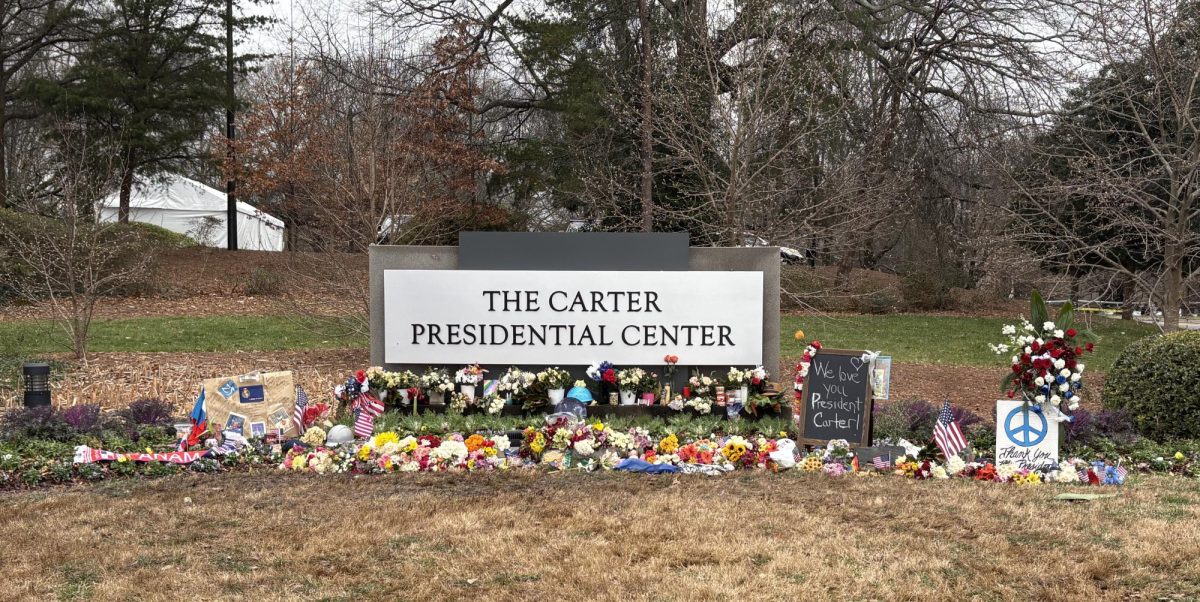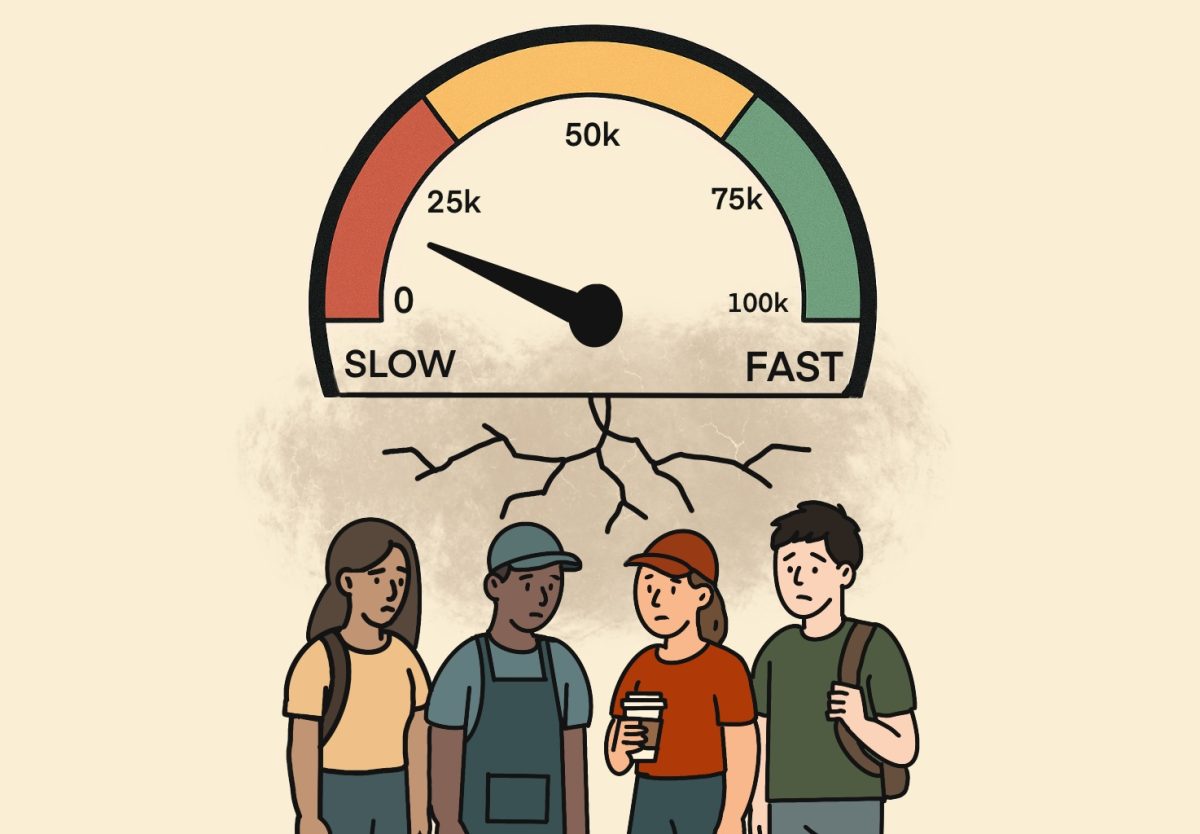On April 16, 2013, former Flint, Mich. emergency managers, Darnell Earley and Ed Kurtz, decided to use water from Lake Huron instead of from Detroit pipes for the city’s supply, believing the decision would save millions of dollars. Because the completion of the Lake Huron pipeline was projected to take up to three years to complete, on April 25, 2014, the city began drinking water from the Flint River.
“It’s a historic moment for the city of Flint to return to its roots and use our own river as our drinking water supply,” Flint Mayor Dayne Walling said to officiate the use of the Flint water treatment plant. “The water quality speaks for itself.”
Many workers in the Flint Water Treatment Plant, however, felt like they needed more training to comfortably monitor the drinking water.
“My husband knows somebody who works at the water plant and [the workers] haven’t treated drinking water in 40 years,” said Candy Thomas, special education teacher at Carman Ainsworth High School in Flint Township, Mich., in a Southerner interview. “That water treatment facility had not been used for that purpose.”
While local government was confident the water was drinkable and the Michigan Department of Environmental Quality announced the water met state standards, many Flint residents complained about the water’s discoloration, texture and odor.
“The very first day it happened, the water that came out of the tap was a dark brown and it stunk up the house,” said Lexis LaFave, a sophomore at Kearsley High School in Flint. “It smelled rotten, like death.”
Within a couple days of using the water, the color became lighter and LaFave’s family reasoned rust had caused the initial discoloration. In the following months, however, E. Coli bacteria was detected in the water and a report from the Environmental Protection Agency found a spiked level of trihalomethanes, a disinfectant byproduct, which violated the Safe Drinking Water Act.
“Every month we would get a notification saying this chemical was at an elevated level, but [the water] was still safe to drink,” Thomas said. “When General Motors stopped using it because it was rusting their parts, then we knew something was wrong. At that point, my family stopped using the water.”
It was not until Feb. 18, 2015 that the EPA found 104 parts per billion of lead in drinking water at the home of Lee Anne Walters. According to the EPA’s website, any drinking water with more than 15 parts per billion of lead needs to be regulated to control corrosion. All throughout the summer of 2015, Flint citizens spoke out against the water as children developed rashes and more homes and buildings tested positive for lead.
“My brother, Ryan, has a rash on his hand due to the water,” LaFave said. “At first he would just scratch it, but now he will cry because it itches so badly. We don’t let him play in the bathtub anymore; we try to distract him by saying, ‘okay let’s go watch Spongebob.’ There’s no way to explain it to a 5-year-old.”
After guaranteeing the water’s high quality and denying the effects, Flint officials said on Oct. 1, 2015 that a new analysis of their data showed there was lead in the Flint River water. Flint then reconnected to Detroit’s waterline, but the damage had been made.
“The chemicals in the water itself corroded the pipes,” explained Nadia Koontz, a senior at Kearsley High School. “After switching back to Detroit, it had already been too late. The corroded lead pipes are still seeping through the water despite the kind of water it is.”
As the government began urging residents to stop using the water to bathe, drink or cook, aid organizations, such as the Red Cross and Flint Water Fund, began distributing bottled water and filters to families in Flint.
“When they first started giving out water at the fire stations, they would just give one case a day,” said Alanna Montgomery, sophomore at Kearsley High School. “After a while, they started giving how much people said they needed. We try not to waste it, and if I got a bottle, I’d have to drink it.”
Because Kearsley High School receives water from Port Huron, the school and its faculty hold fundraisers to donate to Flint families.
“Of course I was grateful, but I felt awkward students were donating to me,” LaFave said. “I never got the water because I felt like I would be judged for living in Flint.”
Although LaFave did not take the water donations from the school, she feels overwhelmed by the amount of water currently sitting in her home.
“We have water bottles everywhere now,” LaFave said. “Everything is out of the bottle, so it’s hard to find a place to store the water.”
While Montgomery agrees storage is an issue, her family takes advantage of the influx of bottled water.
“I know a lot of people are stockpiling water in their basement, so even if people stop donating water they have water,” Montgomery said. “Hopefully we get more water that way we can continue to carry out our daily needs.”
Realizing how much water humans take for granted, Raven Burge, another sophomore at Kearsley High School, has become attentive of her water consumption.
“Before it happened, I didn’t think about the water I was drinking,” Burge said. “Now, I have to save the water and not drink it at one time. I have pets that cannot drink the water in the sink. To make mac and cheese, you have to boil water. To make spaghetti, you have to boil water. We’ll move on with our lives and live on bottled water.”
Although Burge is optimistic about Flint’s recovery, many residents remain worried, especially parents with younger children, who may have been exposed to the contaminated water.
“I’m a special education educator, so I know there will be long-term impacts to come,” Thomas said. “There’s going to be the real impacts of lead poisoning, and there’s going to be people who are worried there’s something wrong because of lead poisoning. Parents are anxious.”
Since Jan. 26, 2016, President Barack Obama declared a federal emergency and allocated $5 million to immediately assist. Meanwhile, Michigan Governor Rick Snyder is planning a long-term project to replace the lead pipes. Many citizens, however, have lost faith in government.
“ I don’t think I could drink it, even if [the government] says it’s clean,” Montgomery said. “Water is something everyone needs, and we are being deprived of safe water.”












